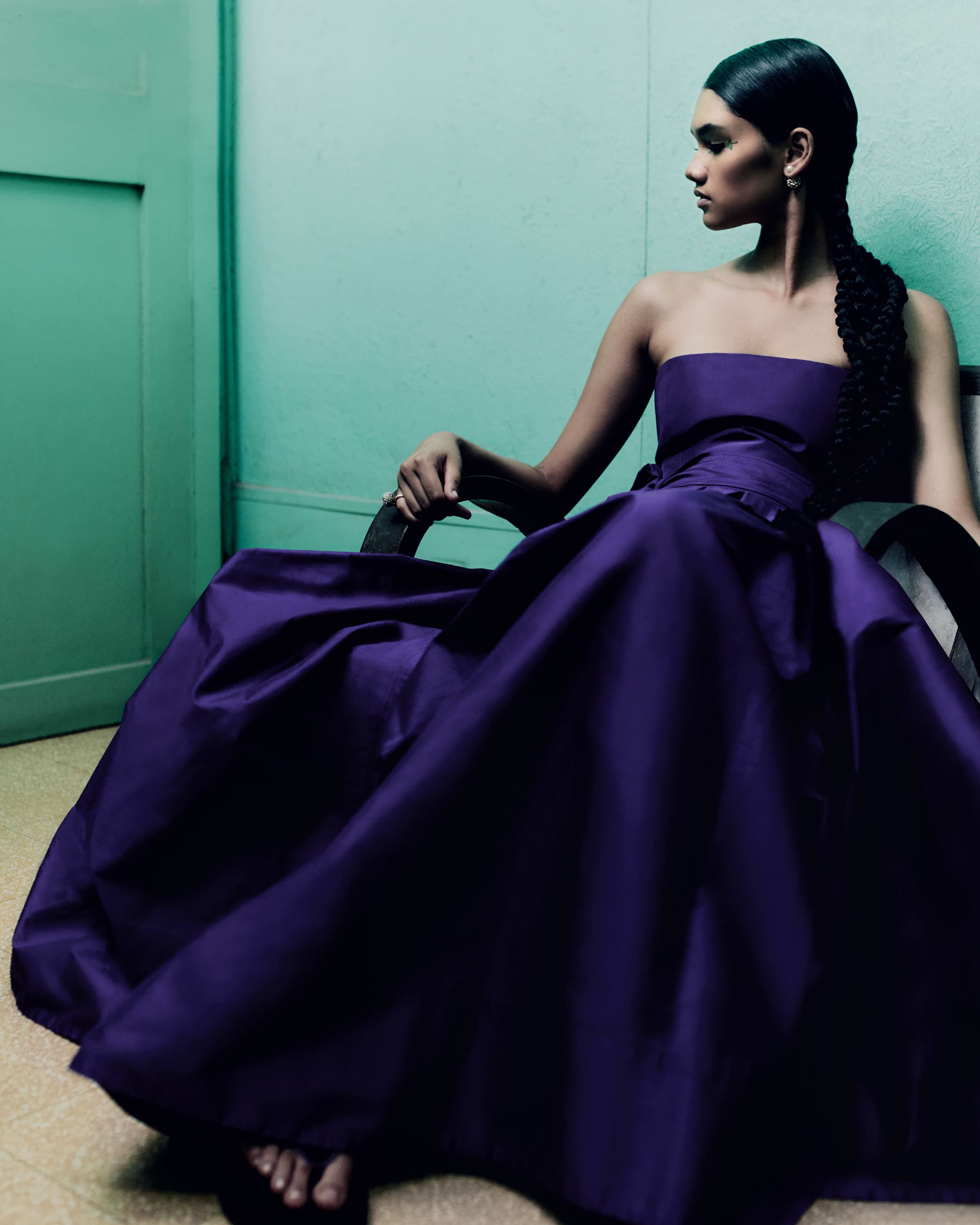LADY IN WAITING. On Nayonikaa: Dress, slides, earring, ring; all DIOR
Through Chanakya School of Craft’s body of work for Dior in Mumbai, Maria Grazia Chiuri has brought Indian craftsmanship into the global conversation. Here, the designer and Chanakya’s Karishma Swalitalk to Megha Kapoor about juggling craft and cut, and navigating the line between cultural appropriation and appreciation.
The Gateway of India, a monument erected to commemorate King George V’s first visit to India and ceremoniously welcome colonial visitors, served as the backdrop to the historic Dior fall 2023 show in Mumbai. Incidentally, the Gateway was also where India waved off the last of the British troops in 1948, cementing her independence as an independent country.
As the fashion community from across the world sat at the Gateway’s feet to witness an iconic confluence of culture and couture, a symbolic duality began to take shape. A cast of elegant Brown girls with their hair in finger waves stepped out in chappals and ankle-grazing sari skirts pared back with Nehru-collared shirts and pearls. Watching them walk to the beat of the tabla layered over classical strings felt like having a front-row seat to the past and the future simultaneously, allowing us all to be cognisant of India’s past as a colony while celebrating how time can evolve to foster a spirit of collaboration, partnership, and friendship between cultures.
The day after the show, I sat between two old friends, Maria Grazia Chiuri (creative director of Dior) and Karishma Swali (creative director of the Chanakya School of Craft), in an elegant suite at the Taj Mahal Palace Hotel, opposite the Gateway. It was this paradigm of friendship and collaboration through craft that underpinned this collection, which Grazia Chiuri emphatically pointed out was not just any other show on an unrelentingly crowded calendar. Dior coming to Mumbai in 2023 was a celebration of métiers d’art and the long-standing connection between the designer and India via the Chanakya School of Craft: a role reversal, where textile, craft, and artisanal excellence became the stars instead of the cut, the silhouette, an It bag, or a celebrity, as we are otherwise accustomed to seeing. French designer Marc Bohan brought Dior to Mumbai (then Bombay) back in 1962, and the ensuing dialogue with India is one that has been truly affirmed by Grazia Chiuri through the 30-year collaborative relationship with Swali and the artisans at her school, Chanakya, which was founded to support women from low-income communities by training them in the crafts at a couture level and in artisanal savoir-faire (largely a male-dominated space in the country thus far).
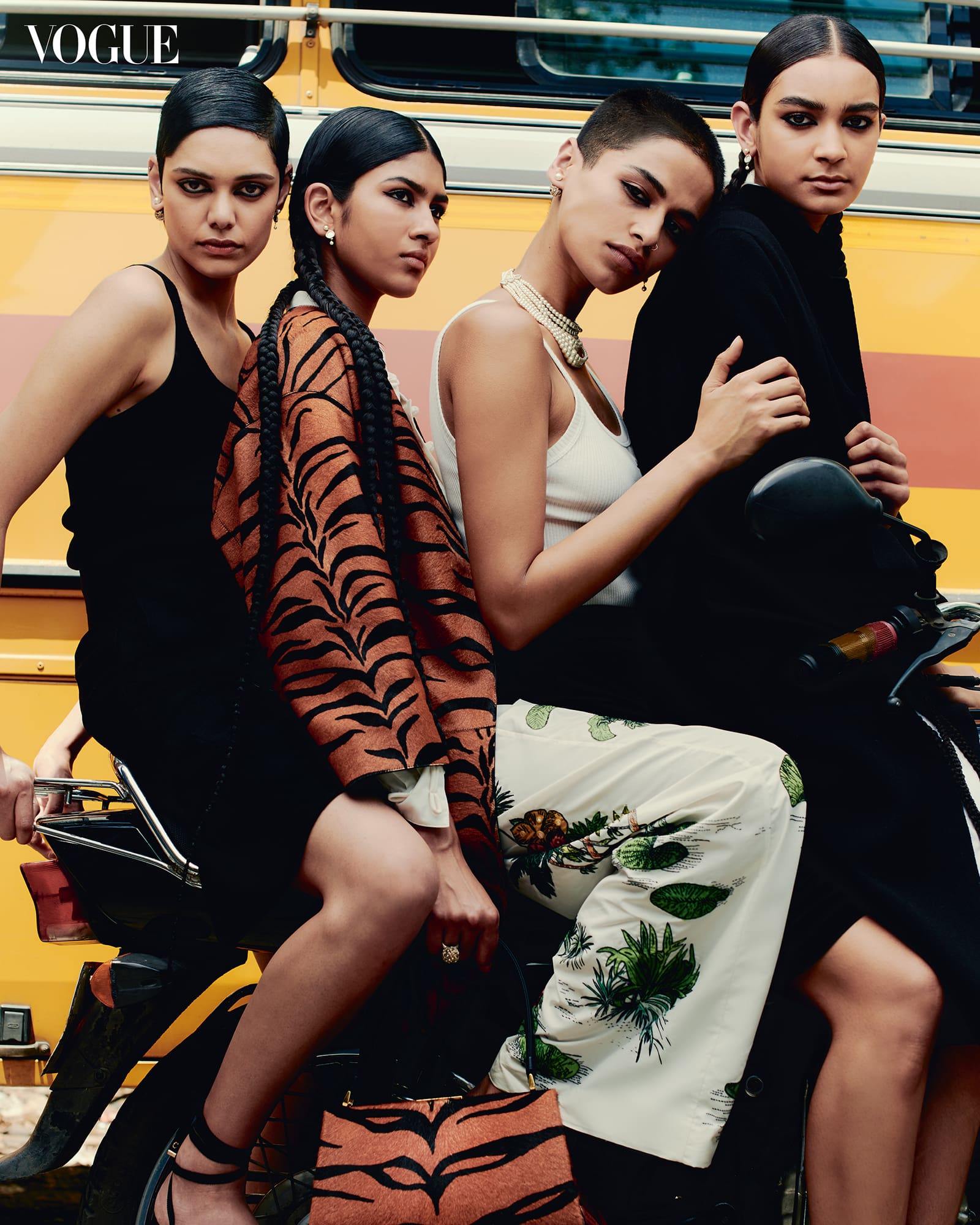

The 160-piece-strong collection, an extension of the lookbook shown on a pre-fall calendar, was a refreshing exercise in polished restraint, perhaps something that speaks to Grazia Chiuri’s affinity with India. This wasn’t a flash-in-the-pan-we-are-going-to-India-lets-pile-it-all-on collection, which is the expected pervasive ‘brand India’ stereotype that is consistently played up. Instead, we saw a wearable mix of elements taken from men’s kurtas and long-column sari wrap skirts, a mix of utility and formality where zardozi, aari, and zari embroideries were punctuated by tank tops and loafers. The Madras check and block print were given singular blink-and-you-miss-it exits. To sum it up, it was a collection that respectfully asked one to pay attention and closely observe the beauty of the hand.
Fresh off Dior’s momentous India showcase, Grazia Chiuri and Swali discuss their collaboration over the years, the meeting of two cultures, and Dior’s long history with India.
Megha Kapoor: It was moving to see our country through your eyes via this collection. It felt respectful to the Indian sartorial vision and craft. Tell us what inspires you when you come to India.
Maria Grazia Chiuri: There are so many references—from the paintings and the exhibitions to the beautiful museum visits—that it’s impossible not to have your reference points when you’re in places like Jaipur and Jodhpur.
You have to go with your eyes closed if you don’t want to reference all the gold, the flowers or the history. I don’t think that I could cover all of it in this life. I feel like this country is a little like Roma, you can never finish seeing it. But its history is very difficult to know and to explore all at once; it fascinates and surprises me all the time. I’m sad I don’t have a long enough life to discover not only India’s present but also its past.
MK: What do you both see as the difference between appreciating a culture and appropriating it?
Karishma Swali: There’s no better way than working together to truly appreciate another culture. In many ways, representation and celebrating cultures teaches us these nuances and we learn as we evolve together. When we represent a mirror work jacket, it’s a coming together of a silhouette that’s so French and a craft that’s Indian but represented collectively to appreciate a certain value. I think it’s beautiful.
MGC: We often approach this criticism in a way that is superficial. It’s impossible to know who made the loom first. Who decides who first made the hand fan that is popular in China? Or the one in South America or Venice? To speak about that, it is also important to explain the logic. This means you are speaking about humanity and about reflecting on the mistakes of the past. It’s too simple of an attack to be made on the use of, say, a flower embroidery—all the elements of embroidery come from nature itself.
There has been a lot of cultural appropriation in the past. But we are more aware now. In the past, designers like Saint Laurent have also shown an appreciation for India simply because they were fascinated. Back then, they didn’t have the cultural reference points to understand these things because nobody in school studied colonialism.
I come from a country where colonialism didn’t exist when I was a child. When Karishma arrived in Italy in 1990, she would have seen only Italian citizens. We did not have a big population or any sort of diversity. Things have changed a lot since I was a child. I grew up studying in an all-Italian school where the only extent of any difference could be seen between the Northern and the Southern Italians. The people of my generation didn’t have that kind of education, especially because it wasn’t taught in school. So it’s very complex.
MK: It is complex, but I think what you’ve done here, without probably even trying, is that you’ve built a genuine relationship, and that comes to the fore. How did Karishma and you meet?
MGC: We met in Rome. I immediately saw the connection between Italy and India because as far and wide as India’s cultural boundaries are, it’s also interconnected. Similarly, the different regions in Italy are like the different states of India, each with its own strong heritage and identity. This helped us understand our similarities.
MK: There are lots of parallels in the ways you think. Is that something that you see in the approach to craft and the use of hands in Italy and India?
MGC: Yes, everything is passed down from the craft in some way, and this is a strong element in our personal story. My grandmother and my mother were both seamstresses. My grandmother was an embroiderer in an atelier in the South of Italy. Karishma and I found our parallels, which perhaps helped to start a dialogue.
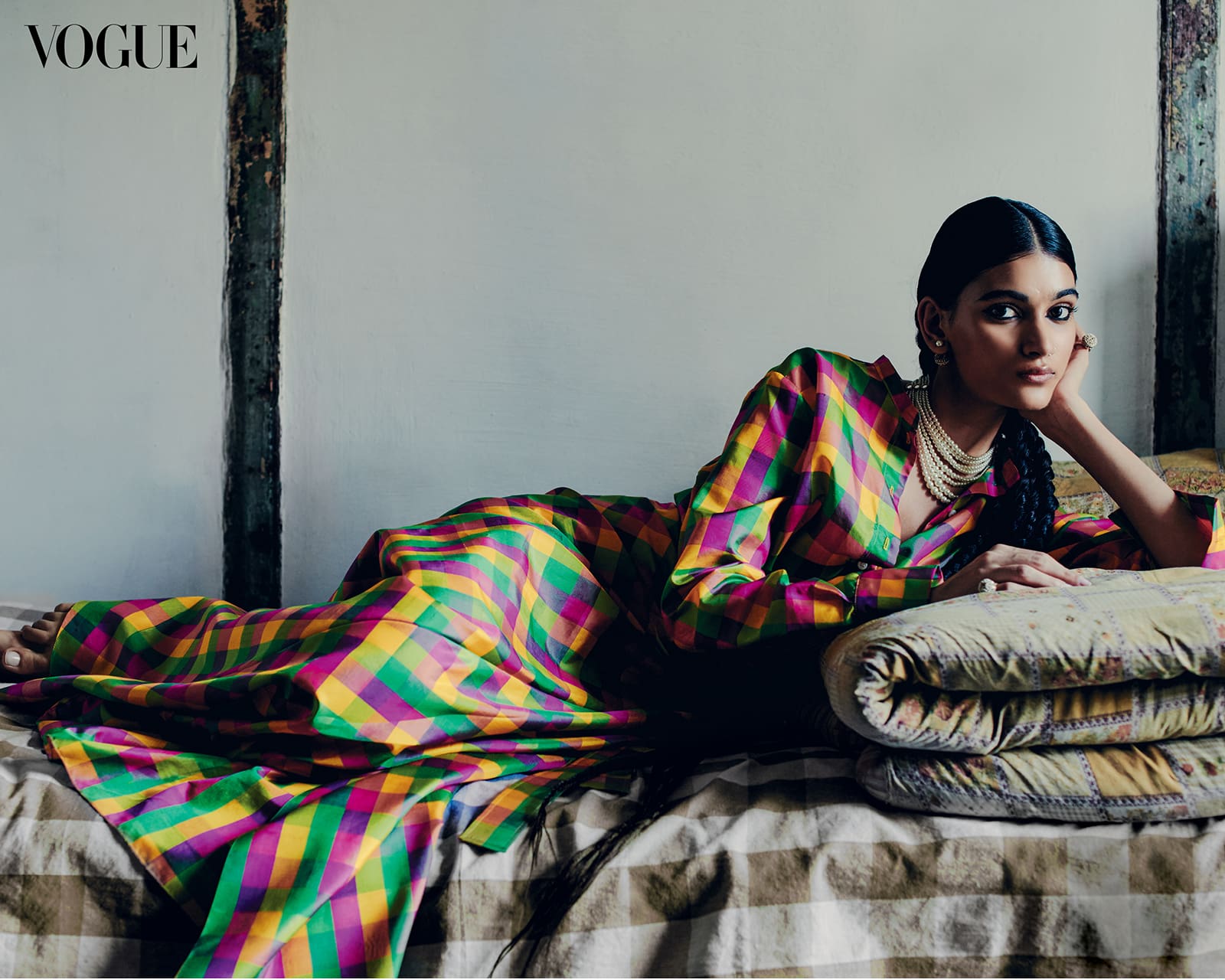
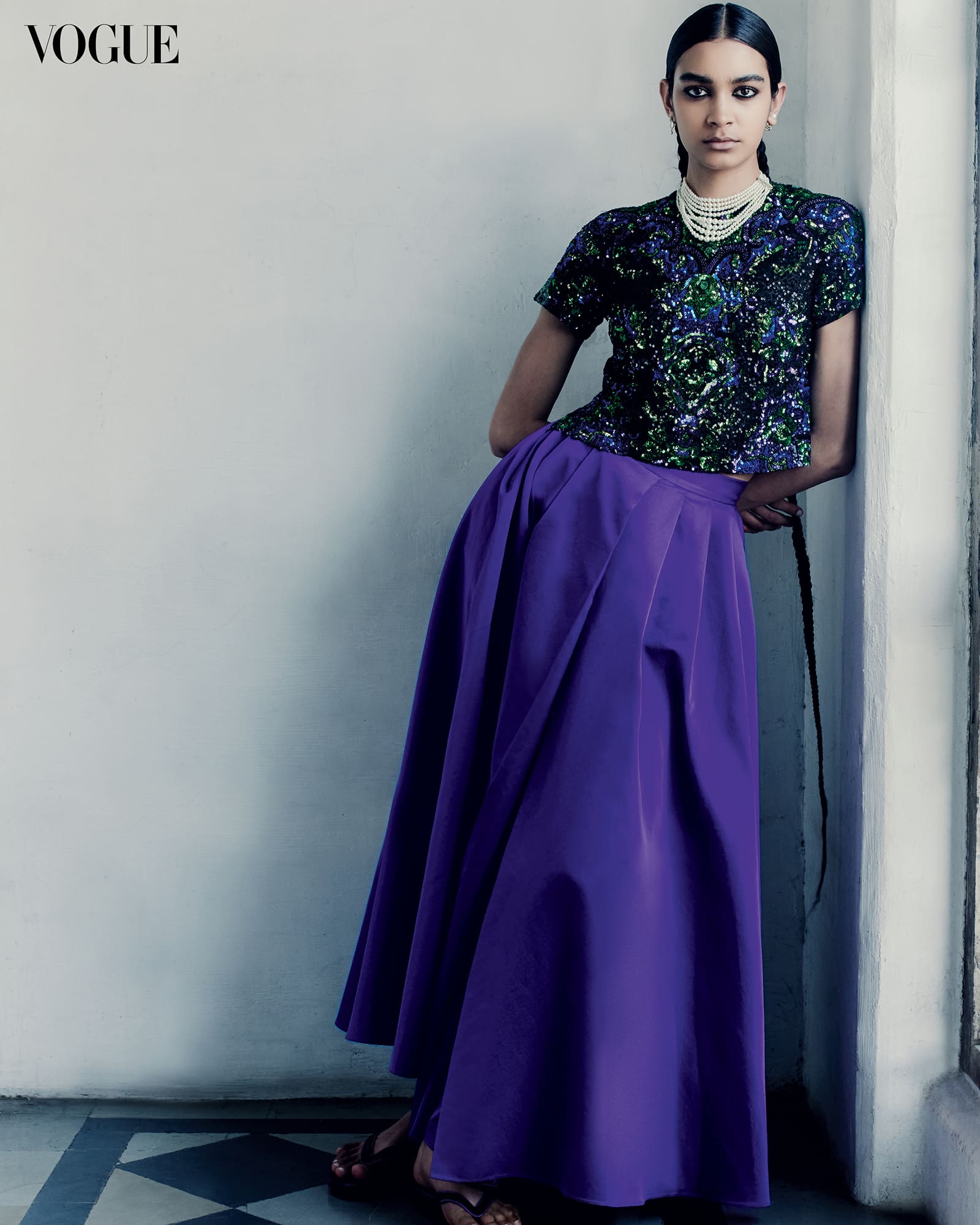
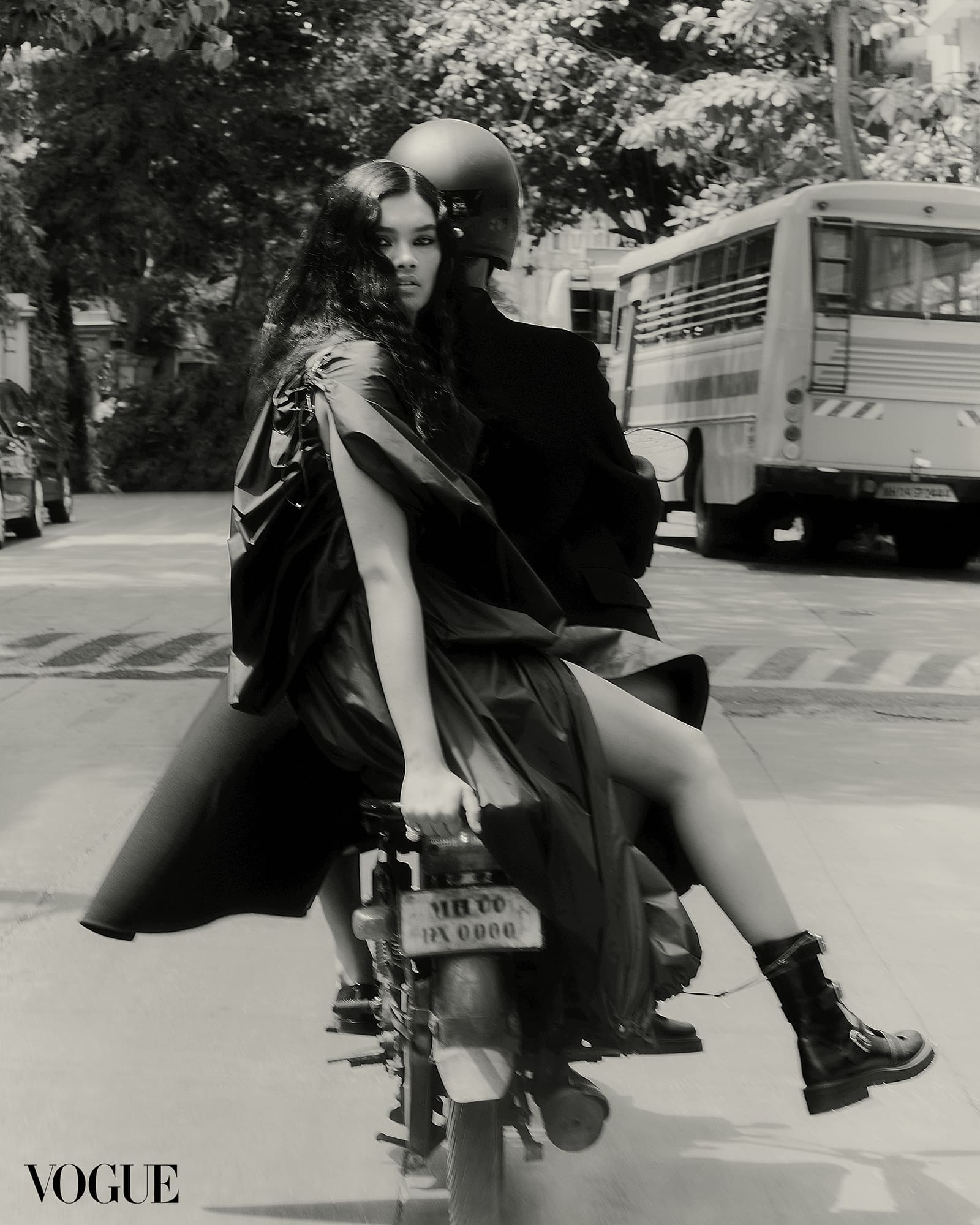
MK: Your story is an example of artisanal heritage being passed down. I loved what you said in the press conference about how you came to your craft with the privilege of choice rather than necessity. Karishma, there’s a similar theme in the work you’re doing at Chanakya to empower women. Do you think collaborations like yours bring agency and the element of choice to women who want to choose this path for themselves?
KS: For both of us, recognizing that our culture is embedded in crafts is a way to recognize our identity and to be able to find ways to preserve it through innovation and education for future generations. In every part of India or Italy, there’s an aspect of finding yourself through your culture and craft. At Chanakya, it’s important to be able to recognize this and understand the importance of our cultural sensibility. That investment in the excellence of craft, that acknowledgment, and making it in the best possible way really allows one to become an ambassador of craft. Every student of the school understands the importance of what they are doing and the responsibility attached to doing it the best that they can. It allows them to be able to be part of a larger dialogue that represents a certain value. So that is really what we seek to do at the school.
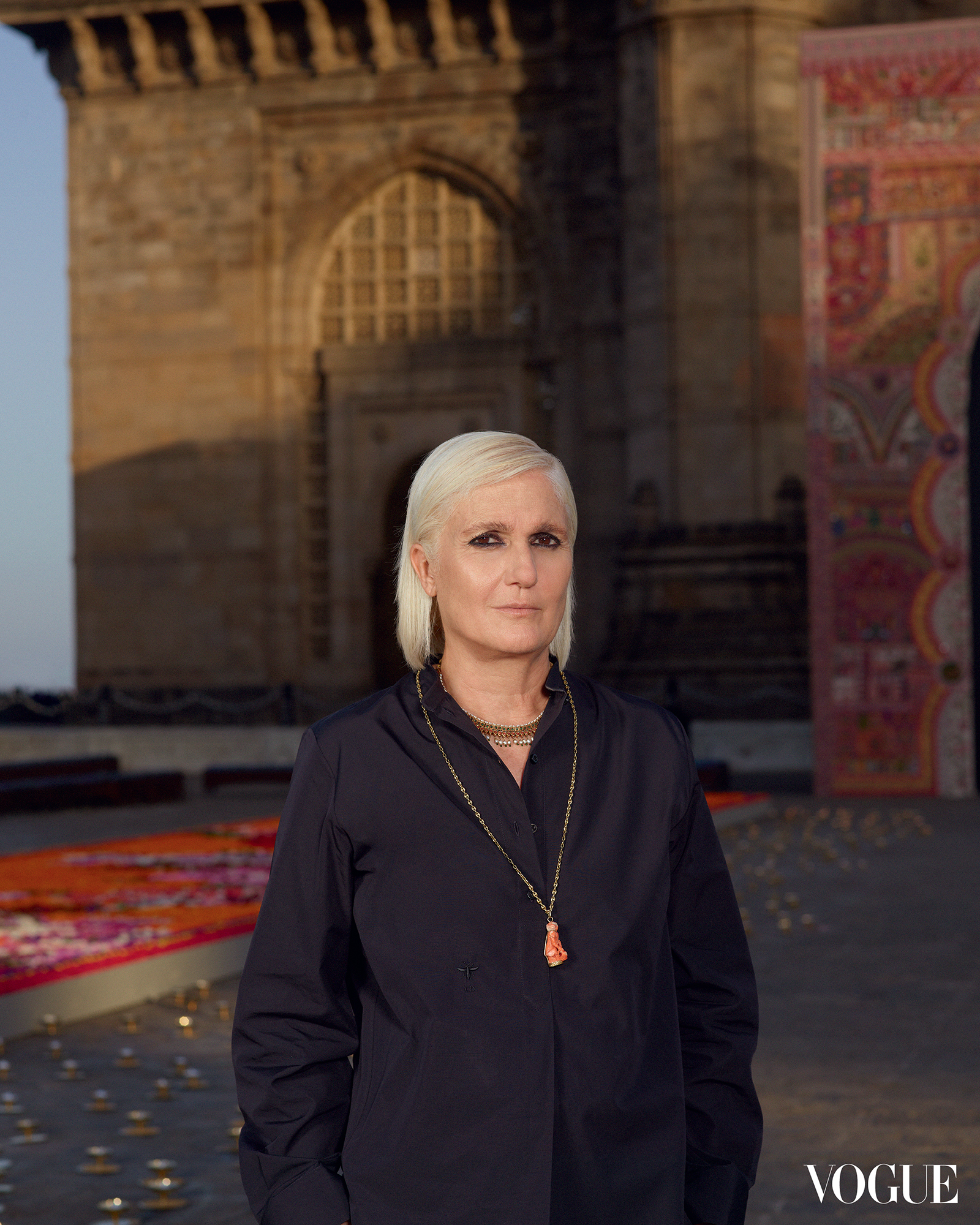
MGC: What I said at the conference was true. When I was young, and I didn’t do well at school, my mother would try to punish me by asking me to embroider. But it didn’t feel like punishment to me. As a child, I was obsessed with going to the atelier and bringing back pieces she didn’t use to try and make something out of them, like a bag. For me, it was a passion to realize those ideas and try to make them materialize.
MK: It wasn’t a chore or a job for you. It was a joy. And I think that’s such an important thing to add in because I think with artisans in this part of the world, the narrative is so focused on financial security that bringing the element of joy and creative expression into the conversation is so important.
MK: Have Karishma and you ever had any hurdles in realizing your collaborations over the years?
KS: No [laughs].
MGC: No, we can create collections on the phone now, because we have been working together for such a long time. The original group that worked together was very small. It was a team of only five people.
KS: It’s been a long time. These are the same artisans that we have worked with, the same masterjis. They understand Maria’s language. If you tell them she’s looking for something poetic and fragile, they will know exactly what she has in mind.
MGC: We have a lot of shared references, and we’ve also made a lot of mistakes. So, in every collection, we’ve managed to learn more together.
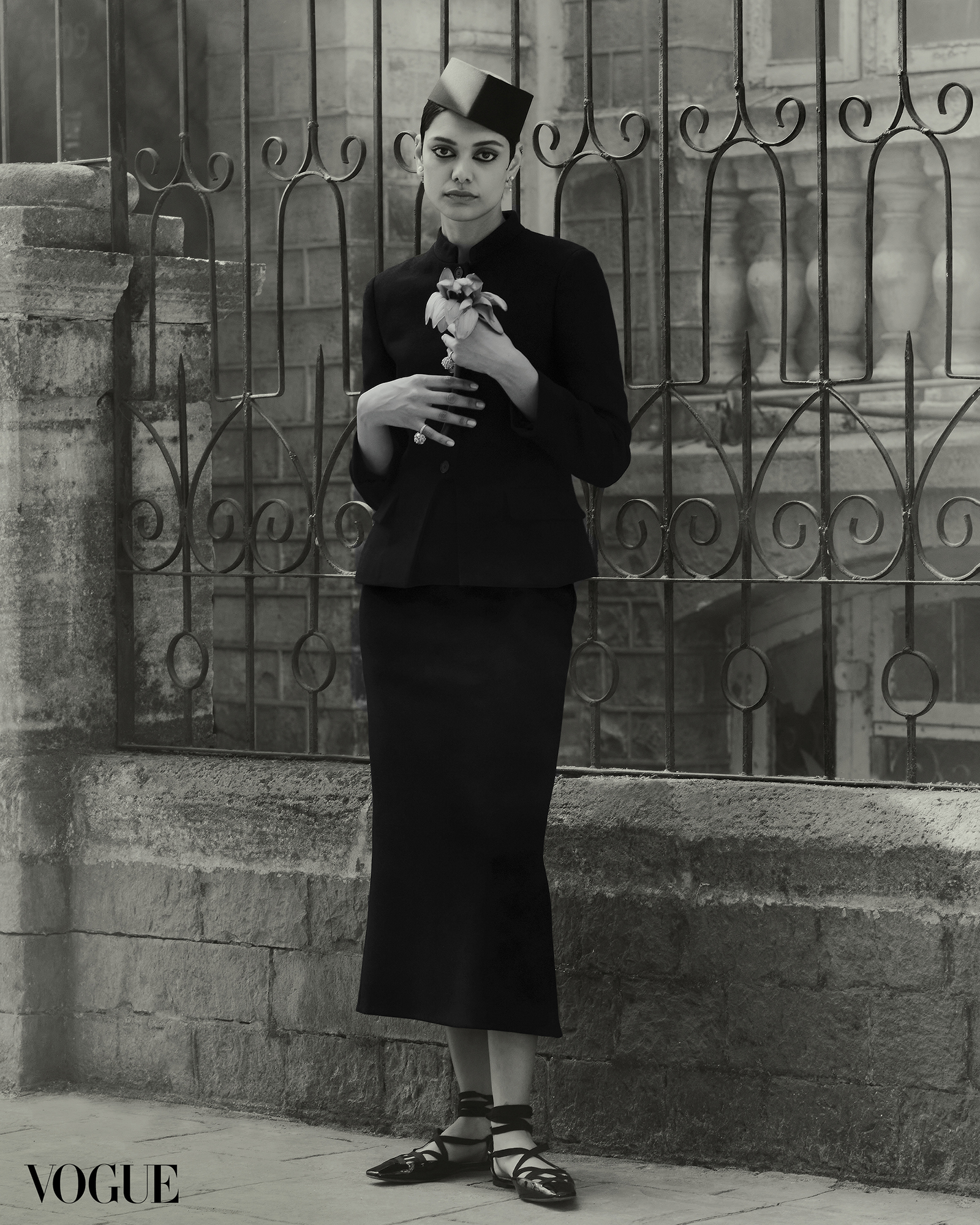
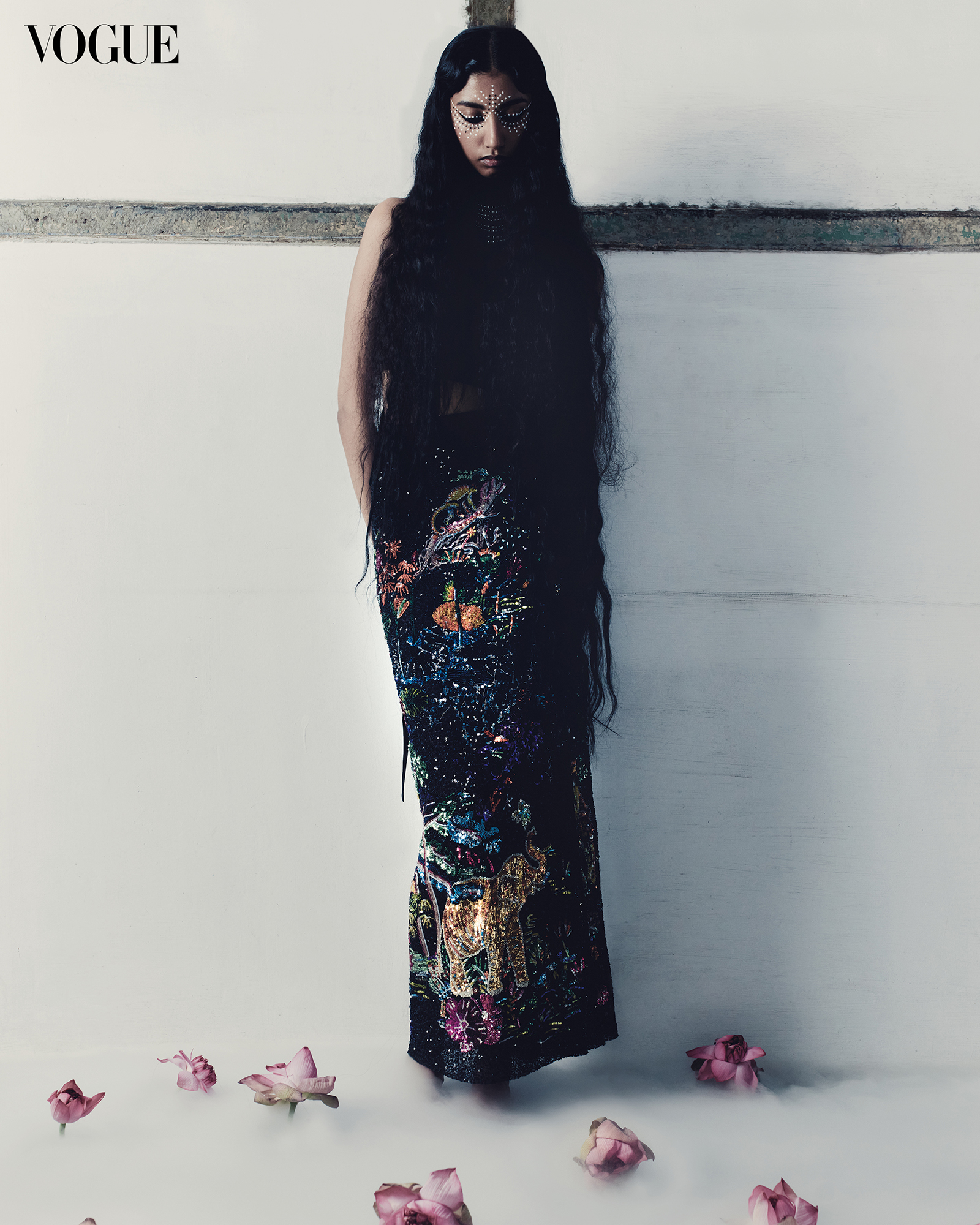
MK: Do you feel like you’re becoming an ambassador for crafts?
MGC: No, I think Karishma is the ambassador. She’s very calm when she has to speak to people. I find that performing for these interviews is more difficult than realizing a collection. The thing that interests me the least in life is to represent something because to do that means you have to go around and speak about it. I like to do things that I really enjoy, like creating things such as a new collection. I enjoy that more. I can be a spokesperson for a short time, but in the end, I like being backstage.
MK: There is an on the calendar these days. There are so many shows and so many collections. Talking about that, I think, often with fashion, it’s about the cut, the silhouette, and sometimes about which celebrity you have walking the show. But with this show, it felt like it was a real celebration of artisanal excellence, of craftsmanship. The artisans at Chanakya were right up there at the forefront, which felt so important.
MGC: It’s important to explain what it means to work in a luxury brand that also creates haute couture. We have similar traditions in France and in Italy. But not all these ateliers are haute couture ateliers. The haute couture level of skill is the highest level of artisanship that you can find around the world. What we did together in these 20-odd years is work together on that level of haute couture that you don’t find everywhere.
MK: As you said, not all crafts are equal.
MGC: Sometimes, maybe you need to find a different kind of leather just to explain why an haute couture brand like Dior works in this manner. It is in this way that you can maintain the level of quality and detail. Sometimes in fashion, everything goes so fast that people don’t understand how much time it takes to create something, which I think is so important to understand. As you said, everything is more concentrated. The fashion industry is more obsessed with the cut, with the line, with the silhouette, and with the look.
MK: Yes, absolutely.
MGC: I don’t think that they realize each single element of the look is a project on its own for the brand. It is important that we explain what we do and how we do it—to the audience and to the next generation seeking to be designers. Sometimes, the communication of the image becomes more important. It becomes about the look and the image, and everything becomes so fast. It’s like you can create a look in five seconds. But before you design a look, you have to realize that there are many smaller projects in motion to realize that one look. I think we have to really involve a new generation of designers who can understand this complexity.

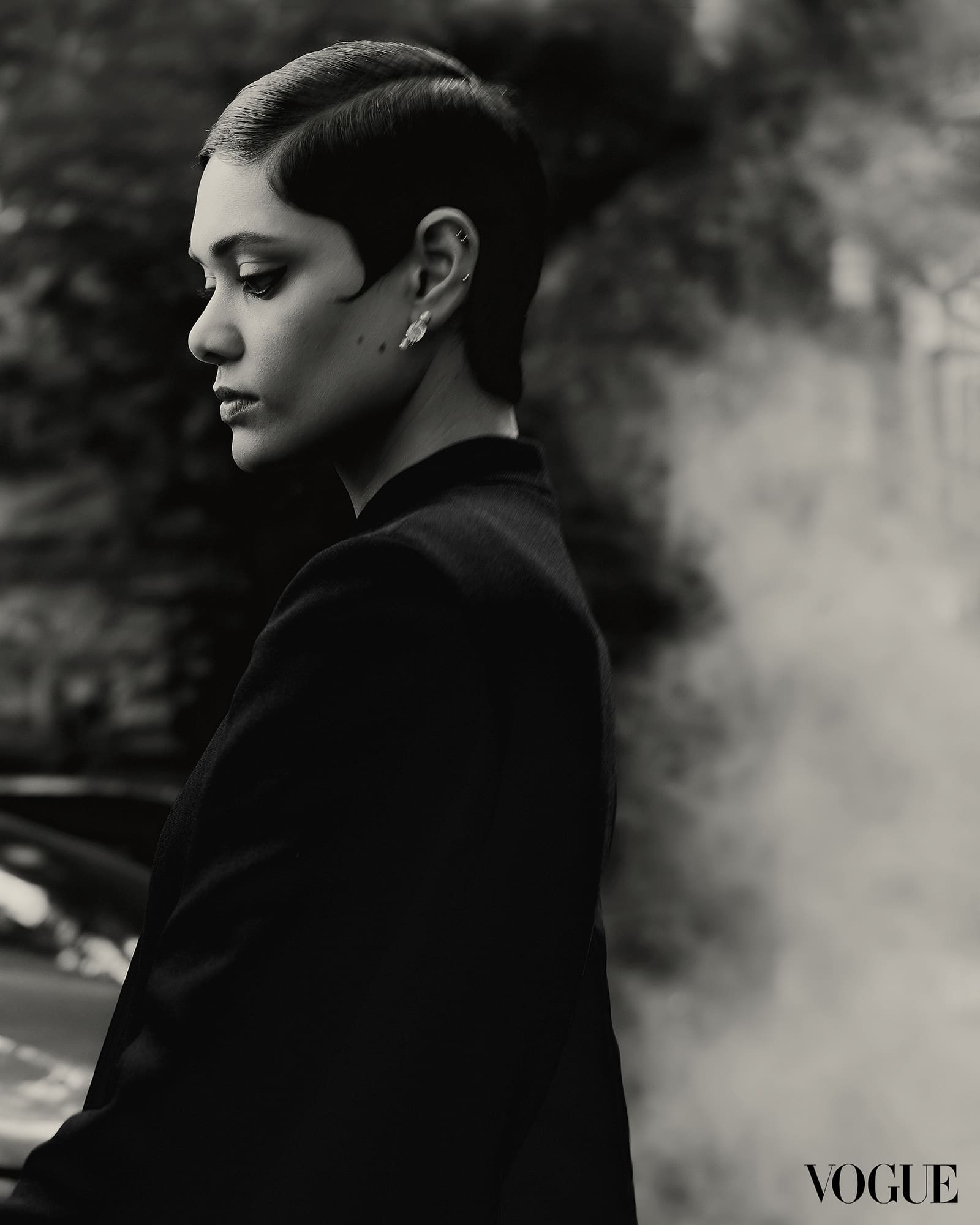
MK: How do you think we can do that? Today, textiles or embellishments are seen as surface decoration. Something that is just added on at the end. But textile development takes hours of labor and thought—there’s so much behind it. How do we all tell that story?
MGC: The reality is that you don’t know the full extent of the things you realize. When you create shoes, you have to decide in advance what kind of embroidery is to be used and then overlay it on top of the patterns created for the shoes. If you see our shoes, the embroidery is unbelievable. You have to have knowledge of how to put it together. There is a continuous dialogue between the creative side and the atelier’s technical side. We get our shoes made in the north of Italy, and then we have Karishma in Mumbai. You start from the stitching to understand if it works for the bags too, but with clothes, it’s another story. For every single thing we create, all of this has to be integrated.
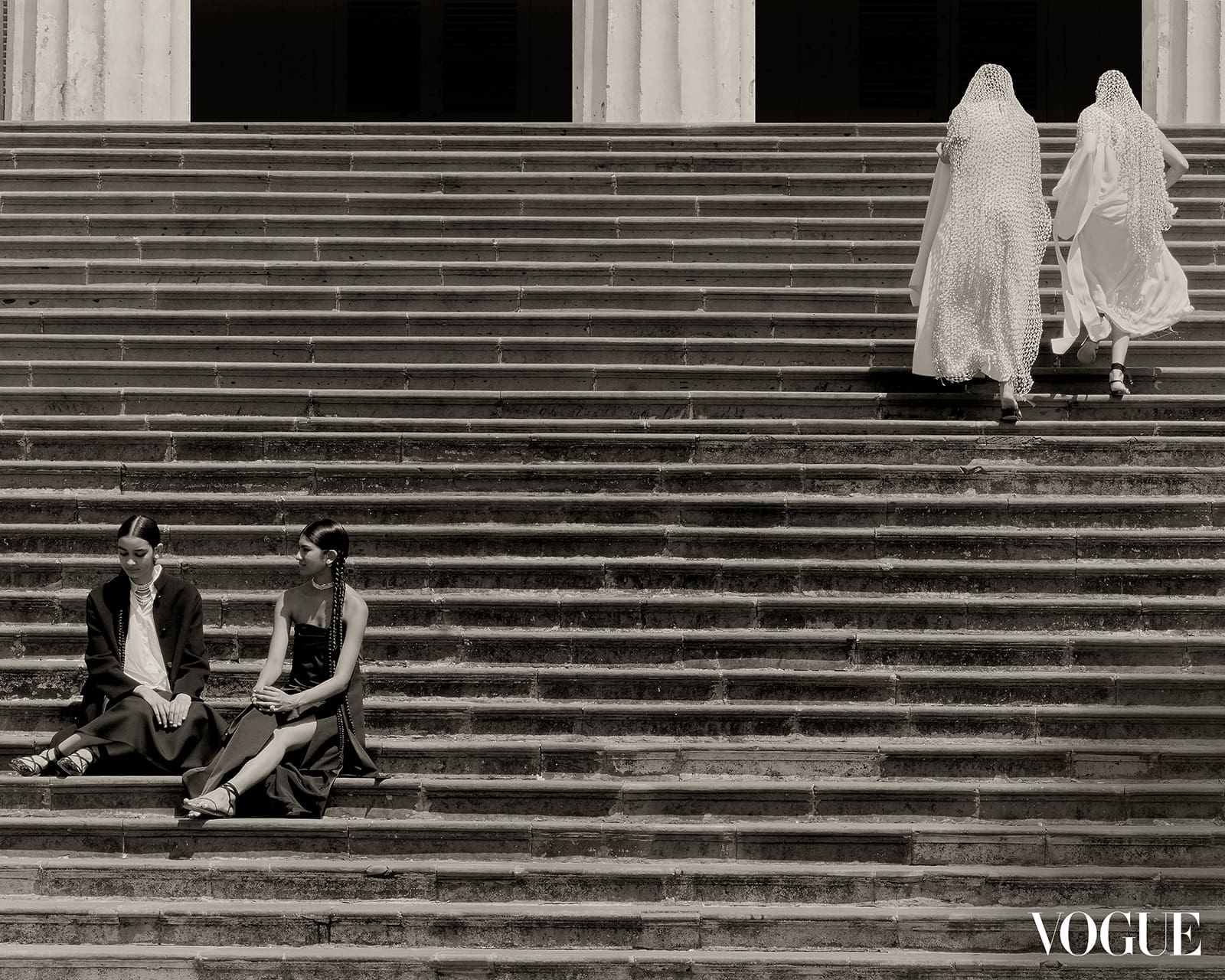
MK: And how do you find this multifaceted, cross-cultural dialogue with your artisans? I can imagine that the operating system and the level of communication must be quite immense.
KS: This is a creative exchange. This dialogue is not only from a creative point but also through a technical lens and with a view of integrating the savoir-faire that goes into making it a product that actually stands for luxury and excellence. I’m always fascinated by the intricate nature of how a fine object has to be made. There’s a paradigm shift in this process, where it has now become more and more collaborative. And the more integrated the creative dialogue is, the more I think you can feel a palpable and tangible difference in the excellence of the product.
MK: Dior has a long history with India, and you’ve carried this relationship forward in a way that doesn’t feel performative. You have a strong connection with the country that goes back many years before you began your tenure at the house. Does this show signal a continued dialogue with India into the future?
MGC: The real thing about this project, as I said from the beginning, is that it is very personal. Karishma and I began this dialogue with artisans. It was so strong and personal that I really think they became a part of my creative process. We grew together with them. The first time I met them, when I went to visit the atelier, I felt like I was discovering the magnificence of this country and its history. Working with Karishma for this show was not just for one collection. It was more about celebrating the métiers d’art, and the value of the crafts, embroideries, and textiles of India. Our relationship is akin to that of a team. Sometimes, it’s very difficult to explain the complexity of what we do as a global brand. We have many different shows around the world. This is not one collaboration for one collection or for one project; it’s an ongoing relationship.

Photographs by ETHAN HART. Styling by SAMAR RAJPUT
